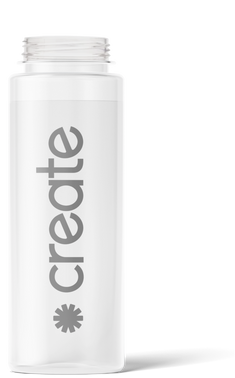Understanding The Effect Of Creatine And Compartment Syndrome
Explore the link between creatine and compartment syndrome. Learn causes, symptoms, and treatments. Get expert insights on managing creatine.
In sports science and nutrition, creatine has long been heralded as a powerhouse supplement for enhancing athletic performance and promoting muscle growth. However, as its popularity has surged among athletes and fitness enthusiasts, concerns have emerged regarding its potential link to compartment syndrome—a painful condition characterized by increased pressure within muscle compartments that can lead to serious complications.
Let’s unpack the intricate relationship between creatine supplementation and compartment syndrome, exploring the underlying mechanisms, risk factors, and the latest research findings. Whether you're an athlete looking to optimize your performance or simply curious about the implications of creatine, join us as we delve into this crucial topic and shed light on how to navigate the world of supplements while safeguarding your health safely.
Does Creatine Cause Compartment Syndrome?
The potential link between creatine supplementation and compartment syndrome is a subject of debate among athletes, trainers, and medical professionals. Compartment syndrome is a painful condition caused by pressure build-up within a muscle compartment, which can impede blood flow and lead to severe complications. Creatine is a popular supplement known for its performance-enhancing and muscle-growth properties, raising concerns about its potential role in triggering compartment syndrome.
Research suggests that while creatine does not directly cause compartment syndrome, its use can increase muscle volume and water retention, amplifying the risk in predisposed individuals or those engaging in high-intensity activities. When considering using creatine supplementation, it's important to be cautious, especially if you have a history of exertional compartment syndrome or related issues.
Pay attention to your body's signals, such as persistent pain, swelling, and muscle tightness, and consult a healthcare professional before starting any new supplement regimen, especially if you have existing health concerns or plan to engage in intense physical activities. Understanding how creatine affects muscle physiology can help you make informed decisions that prioritize both performance and safety.
Does Creatine Increase The Risk Of Compartment Syndrome During Exercise?
When exploring the link between taking creatine supplements and compartment syndrome, it's crucial to understand that compartment syndrome usually develops from vigorous physical activity, injury, or medical conditions causing swelling or bleeding within muscle compartments, leading to restricted blood flow and tissue harm.
Research on the effects of creatine on the risk of developing compartment syndrome during exercise is still in its early stages. Creatine enhances muscle performance, promotes energy production during high-intensity workouts, and aids muscle recovery. However, one consequence of increased muscle mass and hydration is the potential for increased pressure within the muscle compartments.
Creatine does not directly cause compartment syndrome, some anecdotal reports suggest that heavy lifting or high-intensity interval training while using creatine may experience tightness or discomfort in their limbs. The rapid increase in muscle volume and the body’s response to the intensified demands. To reduce risk, approach creatine supplementation cautiously, stay properly hydrated, and allow your body to adapt to changes in workout intensity.
How Creatine Usage Affects Compartment Syndrome?
Understanding the relationship between creatine supplementation and compartment syndrome is crucial for athletes and fitness enthusiasts. While creatine is widely recognized for enhancing performance and promoting muscle growth, it’s important to consider how it interacts with the body, particularly concerning hydration, muscle cramping, and exercise intensity.
Dehydration Risk
One potential concern with creatine supplementation is its ability to increase the risk of dehydration. Creatine draws water into muscle cells, resulting in temporary water retention within the muscles. While this can improve muscle volume and performance, it may also cause dehydration if fluid intake is not adequately maintained. Dehydration can worsen the symptoms of compartment syndrome, a condition where swelling within a closed muscle compartment leads to increased pressure and impaired blood flow. It's therefore crucial for individuals using creatine to ensure they remain well-hydrated, especially during intense workout sessions.
Muscle Cramping
When using creatine, some individuals may experience muscle cramping, which can increase the risk of developing compartment syndrome. Cramping is often linked to dehydration, electrolyte imbalances, or overexertion, leading to muscle fatigue and tightness. To reduce this risk, and to avoid related issues like joint pain, it's essential to stay well-hydrated and maintain proper electrolyte levels, ensuring effective muscle function during physical activity.
Exercise Intensity
The relationship between creatine usage and compartment syndrome is influenced by the intensity of exercise. While creatine can enhance athletic performance, intense exercise, especially activities involving heavy lifting or high impact, may lead to increased muscle swelling and stress. This heightened stress can elevate the risk of compartment syndrome, particularly if the body doesn't have enough time to recover between sessions. Athletes using creatine should listen to their bodies, incorporate rest days, and follow recovery strategies to reduce the potential risk of compartment syndrome.
Diagnosis And Treatment Of Compartment Syndrome For Creatine Users
Understanding compartment syndrome, particularly for those who use creatine supplements, is crucial for ensuring safety and well-being during athletic activities. Compartment syndrome occurs when increased pressure within a muscle compartment leads to decreased blood flow, potentially resulting in muscle and nerve damage. Recognizing the signs and symptoms early can be vital in preventing serious complications.
Signs And Symptoms Of Compartment Syndrome
Compartment syndrome is a condition with early signs that can start subtly but quickly worsen. Symptoms include severe pain during physical activity, swelling, tightness in the muscle compartment, tingling or burning sensation, weakness in the affected limb, and pale or bluish skin. In severe cases, there may be a decrease in pulse or sensation. Caution is advised for individuals taking creatine, as it can potentially increase the risk of compartment syndrome due to its effect on muscle water retention.
Diagnostic Tests For Compartment Syndrome
In cases where compartment syndrome is suspected, medical professionals usually carry out a comprehensive physical examination and gather a detailed history of recent activities, particularly any heavy lifting or vigorous exercises. They may use various diagnostic tests to confirm the diagnosis. One common approach involves measuring intra-compartmental pressure using a special needle. Normal pressure levels are generally below 10 mmHg, while pressures exceeding 30 mmHg may indicate compartment syndrome. Additionally, imaging tests such as MRI or ultrasound can be used to evaluate swelling or bleeding in the muscle compartments.
Treatment Options For Compartment Syndrome
After being diagnosed with compartment syndrome, timely treatment is crucial to prevent lasting damage. Initial management strategies typically involve rest, icing, and elevating the affected limb to reduce swelling and relieve pressure. Nonsteroidal anti-inflammatory drugs (NSAIDs) may be prescribed to manage pain. In severe cases where conservative measures do not work, surgical intervention such as a fasciotomy may be necessary to alleviate the pressure. Rehabilitation post-surgery is essential for regaining strength and function, especially for individuals involved in intense physical activity or using creatine supplements, who should monitor their intake closely during recovery.
How To Intake Creatine Gummies While Having Compartment Syndrome?
Managing compartment syndrome requires careful consideration when adding supplements like creatine gummies. Before introducing creatine gummies into your regimen, consult with a healthcare professional experienced in sports medicine or physical therapy.
When incorporating creatine gummies into your routine, it's important to pay attention to the recommended dosage on the packaging, which usually consists of 2-4 gummies per serving. It's crucial to adjust the dosage based on your body's response and consult your healthcare provider if needed to ensure safe and effective use.
When it comes to taking creatine gummies, timing is crucial for optimal results. It's recommended to consume them before or after workouts to aid in replenishing muscle energy. However, if you're dealing with discomfort or pain associated with compartment syndrome, it's important to listen to your body and adjust the timing of intake. In such cases, taking them when you are least active may be more beneficial.











